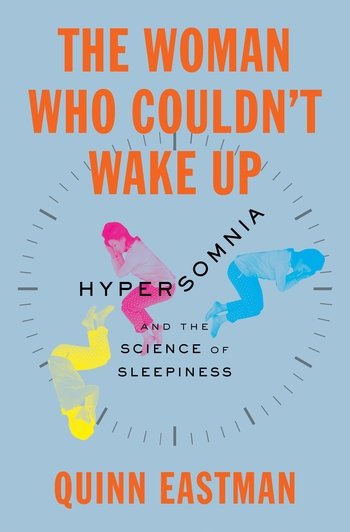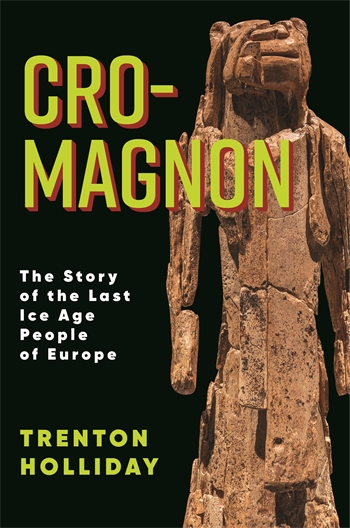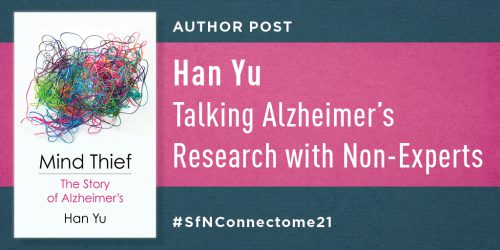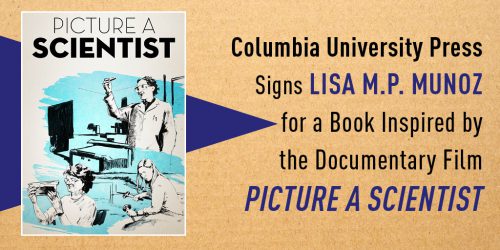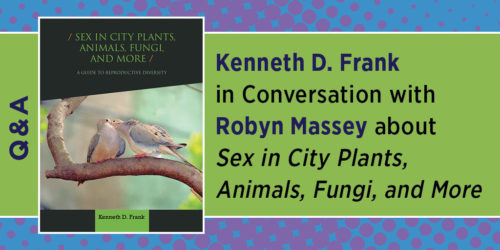Ten Must-Read Science Books for Summer 2023

Summer is the perfect time to dive into the world of science through the pages of a good book. Whether you’re lounging by the pool or enjoying the great outdoors, these ten thought-provoking science reads are sure to both entertain and enlighten. The books on this list have plenty to teach—whether about the human brain, bacteria reproduction, or ancient islands—so grab a cool drink and get ready to join us for a Summer of Science.
Women in Science Now
Stories and Strategies for Achieving Equity
Lisa M.P. Munoz
Even today, women working in the science field face hardships at every turn and are forced to grapple with inequalities—interpersonal and systemic—in order to progress. In Women in Science Now, Lisa M.P. Munoz offers a new perspective on the treatment of women in science and technology, presenting possible solutions to the enduring problem of gender inequity. Munoz combines an abundance of data with compelling narratives to shed light on the obstacles women scientists encounter, showcasing their diverse backgrounds and disciplines. Through this book, readers gain valuable insights into the personal journeys, challenges, and significant contributions made by women to their respective fields. Listen to this interview with Lisa M.P. Munoz on the SWE Diverse Podcast.
The Woman Who Couldn’t Wake Up
Hypersomnia and the Science of Sleepiness
Quinn Eastman
The Woman Who Couldn’t Wake Up tells the story of Anna, a young Atlanta lawyer who struggled to stay awake long enough to perform basic tasks like eating meals. This book investigates Anna’s diagnosis (idiopathic hypersomnia), the community that arose due to the publicity surrounding Anna’s case, and the broader science of sleep. In his exploration of sleepiness, Quinn Eastman delves into the scientific investigations spanning over a century in the quest to uncover the elusive factors that induce sleep in the brain. Privileging the stories of people with idiopathic hypersomnia, this book bears witness to the importance of diseases that have been largely overlooked, while providing fresh insights into the intricacies of our brain’s functioning. Watch this interview between Quinn Eastman and Claire Wylds-Wright, CEO of the Hypersomnia Foundation.
Every Brain Needs Music
The Neuroscience of Making and Listening to Music
Larry S. Sherman and Dennis Plies
Listening to music may not be as mindless as we think. In Every Brain Needs Music, Larry S. Sherman and Dennis Plies make the case that our brains not only work in harmony with music—whether through teaching, listening, composing, or performing—but also benefit from musical experiences. Utilizing prominent research in behavioral, cellular, and molecular neuroscience, alongside comprehensive surveys of musicians, this book presents fresh outlooks on all aspects of consuming and creating music. Read this blog post by Larry S. Sherman and Dennis Plies about how Beethoven’s approach to music was affected by his various physical ailments.
Attraction, Love, Sex
The Inside Story
Simon LeVay
In Attraction, Love, Sex, Simon LeVay embarks on a quest to unravel the mysteries and dispel misconceptions surrounding human and animal sexual behavior. Drawing from his own research and the contributions of fellow scholars and researchers, LeVay approaches the subject with both a biological and psychological perspective, all while maintaining a delightful sense of humor. Through this captivating journey, the book aims to challenge conventional notions and prejudices, fostering a more comprehensive understanding of sex and sexuality by leveraging the insights gained from scientific investigation. Read this Q&A with Simon LeVay, where he discusses why we have sex.
Sex in City Plants, Animals, Fungi, and More
A Guide to Reproductive Diversity
Kenneth D. Frank
An urban setting, with its concrete sidewalks and hulking skyscrapers, doesn’t seem like the most hospitable environment for nonhuman life. Nonetheless, as we learn in Sex in City Plants, Animals, Fungi, and More, nonhuman life finds its own way to survive and reproduce. Kenneth D. Frank explores a variety of topics related to the reproductive behavior of urban bacteria, fungi, plants, and nonhuman animals. Frank’s comprehensive review of urban reproductive diversity highlights how an understanding of sex and mating enhances our ability to appreciate biodiversity. Through captivating images featuring a diverse array of organisms in their urban environments, this book offers a fresh perspective on the natural history of reproduction in cities. Check out the author’s website to learn more about urban nonhuman reproduction and this Q&A to learn more about what inspired the book.
The Curious History of the Heart
A Cultural and Scientific Journey
Vincent M. Figueredo
The heart is often thought of as the life force and emotional center of the human body, making it so significant in our perception of ourselves and our understanding of others. In The Curious History of the Heart, Vincent M. Figueredo explores the emphasis we have placed on the heart throughout history, examining both its real physical function and its function as a piece of cultural iconography. This book utilizes historical sources alongside cutting-edge scientific discoveries to contextualize the heart’s significance in human history and provide a potential path forward in studying the heart. Read a Q&A with Vincent M. Figueredo where he discusses holding a live human heart in his hands.
The Curious Human Knee
Han Yu
The Curious Human Knee is a comprehensive history of the human knee throughout time and place, focusing on a variety of facets of human life related to the knee. Han Yu delves into the intricate anatomy of the knee, its evolutionary trajectory, and the intricate challenges associated with treating knee pain, including her personal experiences. She addresses race, class, and gender influences of knee-related health conditions, fashion trends from flapper dresses to ripped jeans, cultural traditions involving knees, and even the present-day use of kneeling as a form of social and political protest. This book skillfully condenses an extensive body of research into an engaging, conversational, and at times even witty style, inviting readers to discover the intricate complexity and profound importance of the unassuming knee. Read this blog post by Han Yu about how flappers transformed the fashion industry by popularizing short skirts that uncovered the knee.
Cro-Magnon
The Story of the Last Ice Age People of Europe
Trenton Holliday
Have you ever wondered about our human predecessors? In Cro-Magnon, Trenton Holliday teaches us all about the history of the Cro-Magnons—the first anatomically modern humans indistinguishable from humans today. Highlighting the ways the Cro-Magnons dealt with the Earth’s postglacial warming 12,000 years ago, this book offers lasting lessons about human resilience in light of rapidly changing climate conditions. Through careful examination of these fascinating ancient people from anthropological, archaeological, genetic, and geological perspectives, Holliday presents an extensive, well-researched history of the Cro-Magnons. Read this blog post by Trenton Holliday where he disputes the notion that Cro-Magnons were intellectually superior to Neandertals
Humans
Perspectives on Our Evolution from World Experts
Edited by Sergio Almécija
The question of what it means to be human has plagued us for centuries. In Humans, Sergio Almécija embarks on a quest to understand the significance of human evolution by seeking out the perspectives of prominent figures in the fields of paleontology, primatology, archaeology, genetics, and more. Delving into their personal lives, professional work, and the philosophical implications of our evolutionary journey, these experts come together to offer a stimulating and relatable examination of human evolution. This book provides a thought-provoking exploration of human nature and the potential trajectory of our future. Its cross-disciplinary approach presents a refreshing narrative that invites us to consider the tapestry of our origins and existence. Check out this interview with Sergio Almécija about Humans, where he discusses the process of developing his book.
Islands Deep in Time
Ancient Landscapes Lost and Found
Markes E. Johnson
Islands Deep in Time explores the largely unknown ancient islands, the remnants of which can be seen across the world, from southern Wisconsin to the Yellow Sea. Geologist Markes E. Johnson invites readers to embark on a captivating journey through time, as he explores the remains of ancient islands. With an extensive global itinerary, Johnson reveals the remnants of past landscapes, both above and below the current waterlines, illustrating how the present preserves the past. Through the discovery of prehistoric ecosystems, he sheds light on the complexities of island environments while emphasizing the crucial importance of protecting these remarkable sites. Read this blog post by Markes E. Johnson where he where he discusses bird watching through El Niño, and this one where he tells a story about the sighting of a Cambrian island from the Grand Canyon.
Categories:Reading ListScienceWomen In Science
Tags:Attraction Love SexCro-MagnonDennis PliesEvery Brain Needs MusicHan YuHumansIslands Deep in TimeKenneth D. FrankLarry S. ShermanLisa M.P. MunozMarkes E. JohnsonQuinn EastmanSergio AlmécijaSex in City Plants Animals Fungi and MoreSimon LeVayThe Curious History of the HeartThe Curious Human KneeThe Woman Who Couldn't Wake UpTrenton HollidayVincent M. FigueredoWomen in Science Now


